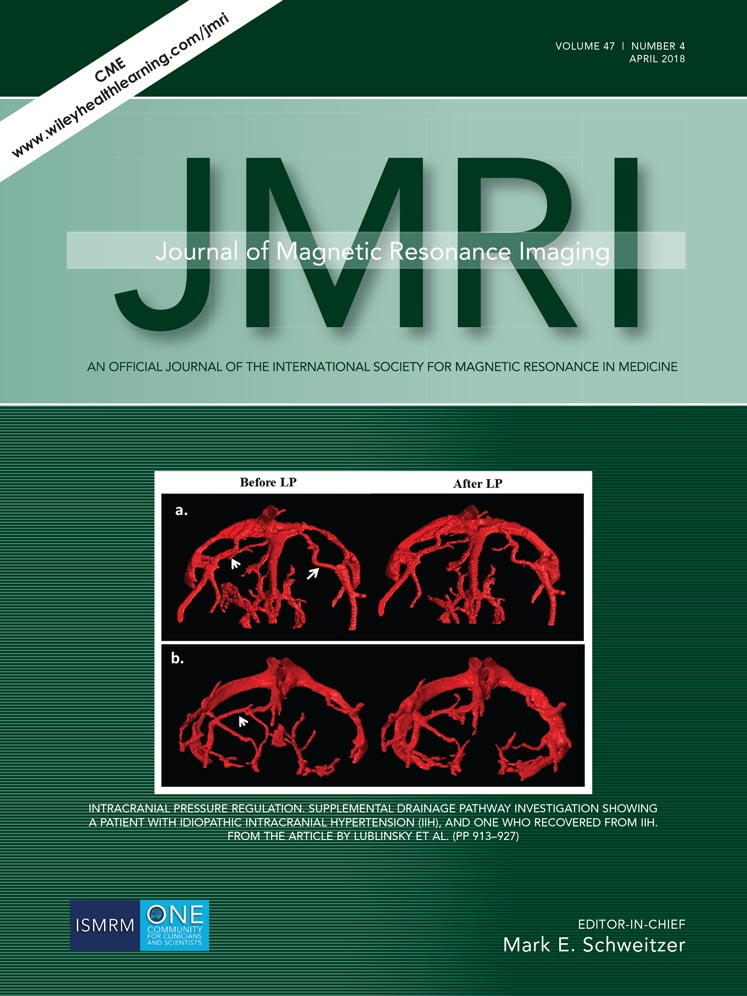Assessment of advanced hepatic MR elastography methods for susceptibility artifact suppression in clinical patients
Abstract
Purpose
To assess the success rate, image quality, and the ability to stage liver fibrosis of a standard 2D gradient-recalled echo (GRE) and four different spin-echo (SE) magnetic resonance elastography (MRE) sequences in patients with different liver iron concentrations.
Materials and Methods
A total of 332 patients who underwent 3T MRE examinations that included liver fat and iron quantification were enrolled, including 136 patients with all five MRE techniques. Thirty-four patients had biopsy results for fibrosis staging. The liver stiffness, region of interest area, image quality, and success rate of the five sequences were compared in 115/136 patients. The area under the receiver operating characteristic curves (AUCs) and the accuracies for diagnosing early-stage fibrosis and advanced fibrosis were compared. The effect of BMI (body mass index), the R2* relaxation time, and fat fraction on the image quality and liver stiffness measurements were analyzed.
Results
The success rates were significantly higher in the four SE sequences (99.1–100%) compared with GRE MRE (85.3%) (all P < 0.001). There were significant differences of the mean ROI area between every pair of sequences (all P < 0.0001). There were no significant differences in the AUC of the five MRE sequences for discriminating advanced fibrosis (10 P-values ranging from 0.2410–0.9171). R2* had a significant effect on the success rate and image quality for the noniron 2D echo-planar imaging (EPI), 3D EPI and 2D GRE (all P < 0.001) sequences. BMI had a significant effect on the iron 2D EPI (P = 0.0230) and iron 2D SE (P = 0.0040) sequences.
Conclusion
All five techniques showed good diagnostic performance in staging liver fibrosis. The SE MRE sequences had higher success rates and better image quality than GRE MRE in 3T clinical hepatic imaging.
Level of Evidence: 3
Technical Efficacy: Stage 5
J. Magn. Reson. Imaging 2018;47:976–987.
CONFLICT OF INTEREST
Mayo Clinic and RLE, KJG, JC, MY, BD, JK, SK, RG have intellectual property rights and a financial interest in MRE technology through equity in and licensing of intellectual property through Resoundant, Inc. RLE serves as CEO of Resoundant, Inc. None of the other authors have conflicts of interest or any specific financial interests relevant to the subject of this article.




